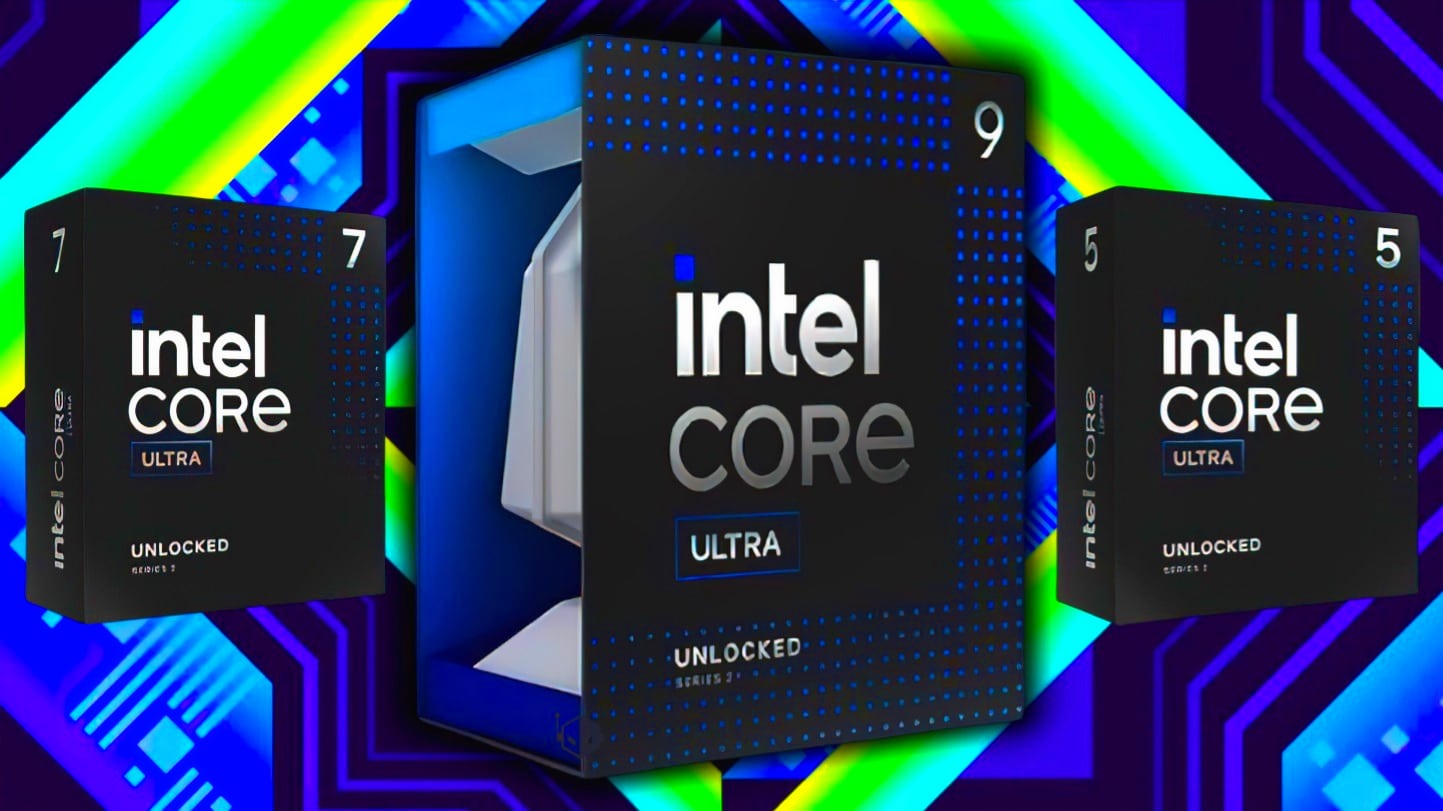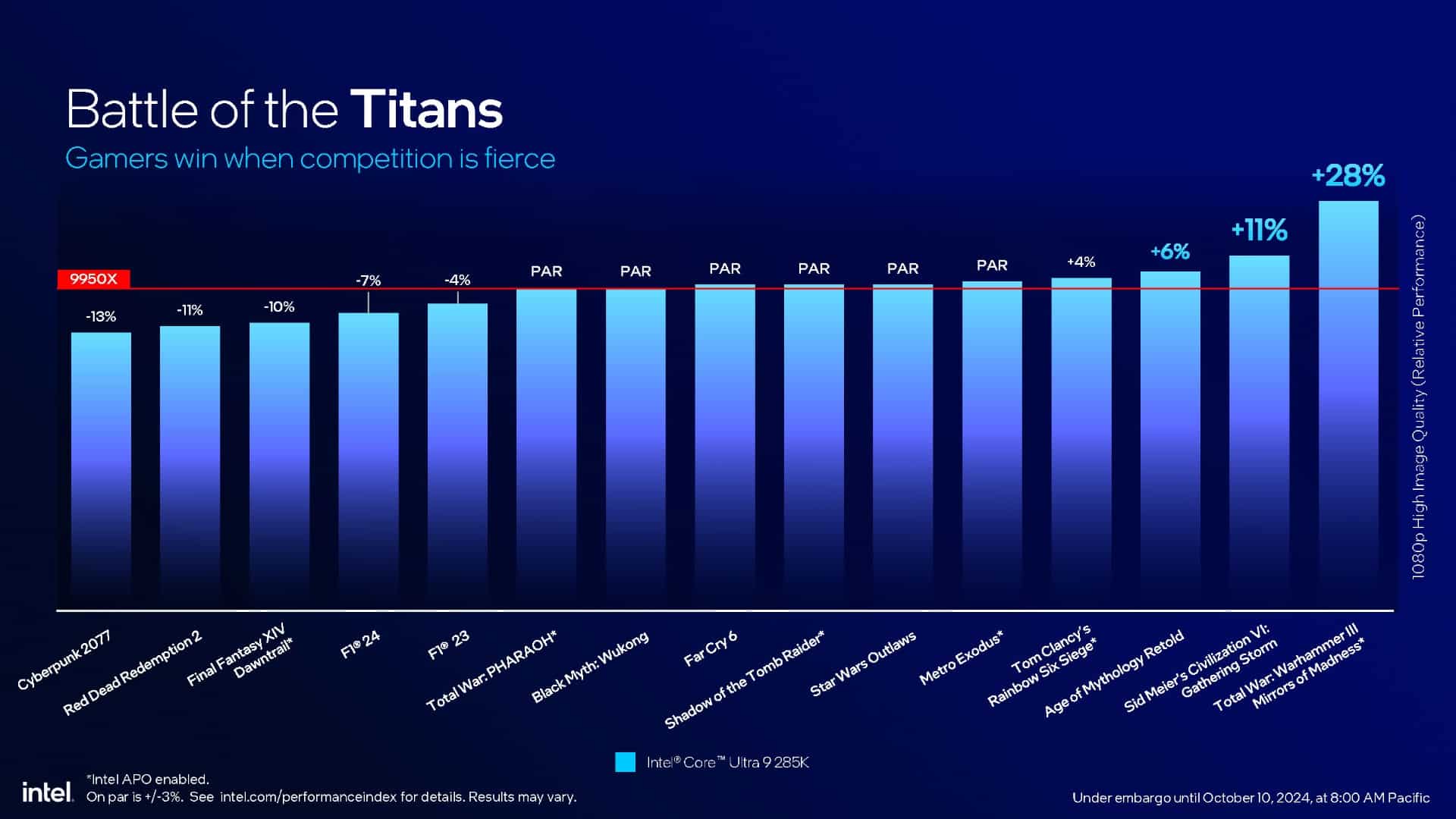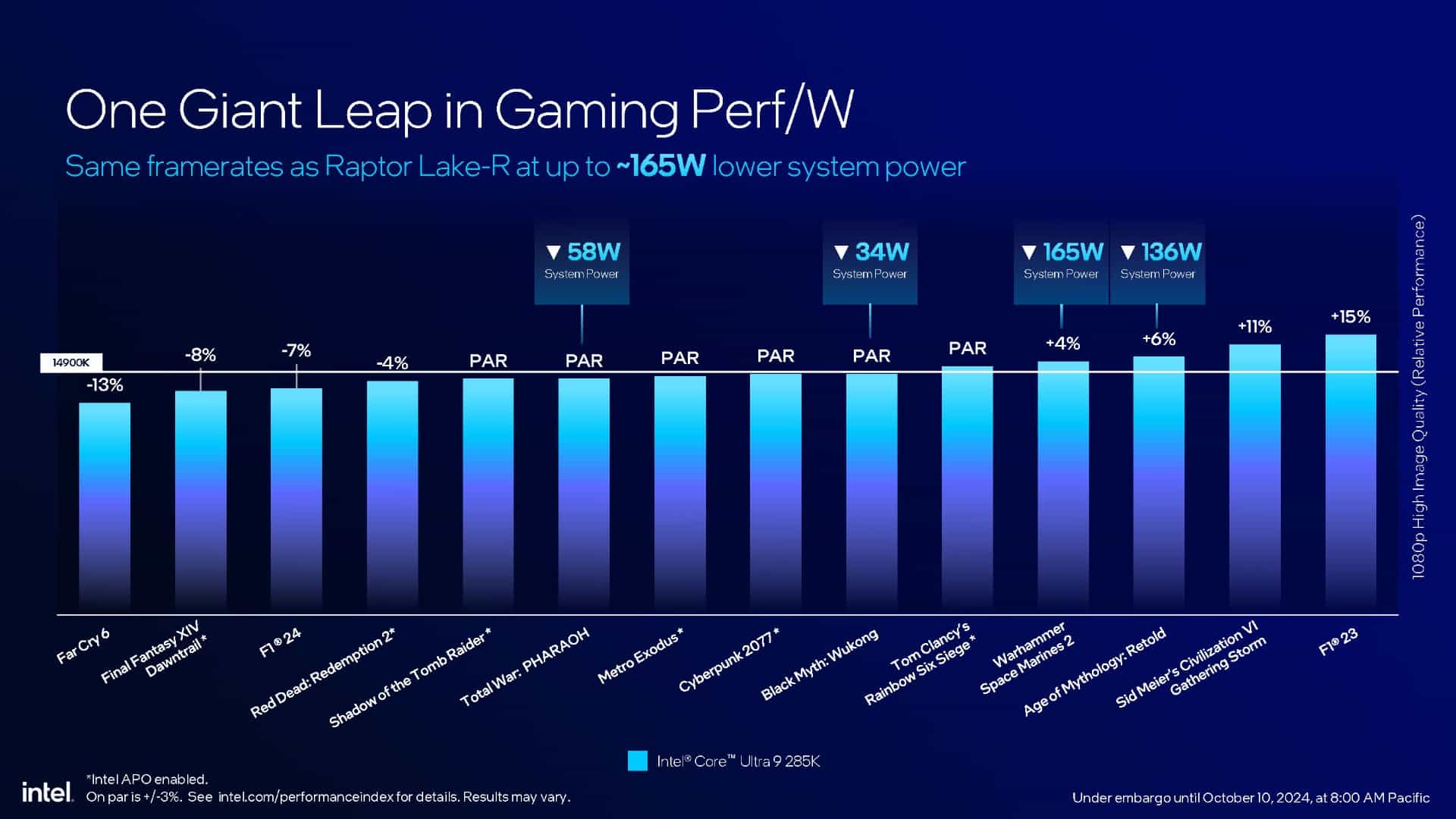Intel promises identical performance to its predecessor with significantly better power efficiency.
Intel Arrow Lake is here: In a press release, the CPU manufacturer unveils the new generation around the series called “Core Ultra 200”.
The leak, which predicted five processors at the launch of the LGA1851-based series, also turns out to be true in the wake of the announcement.
As the new socket makes clear, you will also need a new mainboard for the CPUs. However, existing coolers are basically compatible with the new platform due to identical hole spacing.
Intel Arrow Lake: US prices are official
For the first time, specific US prices are mentioned in the course of the official Intel presentation; however, Euro prices are not available for the five CPUs shown at the time of publication of this article:
- Intel Core Ultra 9 285K: 589 US-Dollar
- Intel Core Ultra 7 265K: 394 US-Dollar
- Intel Core Ultra 7 265KF: 379 US-Dollar
- Intel Core Ultra 5 245K: 309 US-Dollar
- Intel Core Ultra 5 245KF: 294 US-Dollar
In principle, Intel promises reduced core temperatures and improved energy efficiency with the new generation.
In particular, in view of the predecessors around Raptor Lake, where the cause of the instability problems has finally been definitively clarified, the focus is understandable.
The crowbar that Intel wanted to use to force the next clock speed record seems to have been packed back into the toolbox, at least for the time being.
Lion Cove and Skymont are supposed to fix it
One of the key changes in Arrow Lake is the switch to the “Lion Cove” performance cores, which have a nine percent increase in IPC (“Instructions per Cycle”) compared to their predecessor.
The efficiency cores “Skymont” are expected to be even more efficient in this regard. Intel speaks of a 32 percent increase in IPC. Intel also wants to better master AI applications with Arrow Lake in the future; the NPU is estimated to have a performance of 13 TOPS.
At this point, Intel promises that the Core Ultra 9 285K should be able to outperform the AMD Ryzen 9 9950X in the Cinebench multithread benchmark.
Compared to the Raptor Lake flagship Core i9 14900K, it even delivers “identical performance at half the TDP”. This is possible due to the elimination of hyperthreading in the P-cores.
The improved efficiency should also come into play in the home office. Intel speaks here of a 58 percent better energy efficiency.
Game benchmarks: A more efficient 14900K
In principle, Intel declares the Core Ultra 9 285K to be an equivalent processor to the Core i9 14900K – only with significantly improved power consumption.
In games like Black Myth: Wukong or Total War: Pharaoh, you can achieve the same FPS count when taking measurement tolerances into account, but it is between 34 and 58 watts more economical.
- A particularly large outlier is the recently released Warhammer Space Marine 2, which achieves four percent more frames per second under the Core Ultra 9 285K, but is supposed to consume a whopping 165 watts less than the 14900K.
- In a few games, however, Intel also admits that it is still lagging behind the Raptor-Lake flagship, for example in Far Cry 6 (minus 13 percent) or F1 24 (minus 7 percent).
The Intel Core Ultra 9 285K is also on a par with the Ryzen 9 9950X. At least in a variety of games, the performance is said to be identical.
Noteworthy extremes are seen in Total War: Warhammer III Mirrors of Madness (plus 28 percent) and Cyberpunk 2077 (minus 13 percent).
However, it also remains to be seen how Core Ultra 200 will fare against Ryzen 9000’s gaming-oriented X3D processors – especially since it seems that the Arrow Lake generation will have to last for two years.
In terms of core count, clock speed and power consumption, the aforementioned leak has already shown everything there is to see about the five Arrow Lake processors – so you won’t find any surprises in the following table:
| Core Ultra 9 285K | Core Ultra 7 265K | Core Ultra 7 265KF | Core Ultra 5 245K | Core Ultra 5 245KF | |
|---|---|---|---|---|---|
| Number of Cores | 8 P-Cores 16 E-Cores |
8 P-Cores 12 E-cores |
8 P-cores 12 E-cores |
6 P-cores 8 E-cores |
6 P-cores 8 E-cores |
| Base and boost clock E cores | 3.2 / 4.6 GHz | 3.3 / 4.6 GHz | 3.3 / 4.6 GHz | 3.6 / 4.6 GHz | 3.6 / 4.6 GHz |
| Base and boost clock P-cores | 3.7 / 5.5 GHz | 3.9 / 5.4 GHz | 3.9 / 5.4 GHz | 4.2 / 5.2 GHz | 4.2 / 5.2 GHz |
| Processor Base Power | 125 Watt | 125 Watt | 125 Watt | 125 Watt | 125 Watt |
| Maximum Turbo Power | 250 Watt | 250 Watt | 250 Watt | 159 Watt | 159 Watt |
The function called “Thermal Velocity Boost” is reserved exclusively for the Core Ultra 9 285K. Put simply, up to two P-cores can receive a separate boost in clock speed and thus clock up to 5.7 GHz.
One level below is “Turbo Boost 3.0”, which specifically takes an attenuated approach on the Core Ultra 7 265K up to 5.5 GHz.
- The information about the RAM has also been leaked before: DDR5-6400 is the maximum speed according to the JEDEC standard. As in previous generations, a maximum capacity of 192 GB is possible.
- The Core Ultra 200 CPUs with K suffix also receive a new Xe GPU with four Xe cores and raytracing units. Full support for DirectX 12 and Intel’s own XeSS as an upscaler are mentioned. As usual, the KF models do not come with their own graphics unit.
With all this information, however, the presentation lacked a date for the market launch of the five Arrow Lake CPUs.
The rumors, which correctly predicted the unveiling for October 10, 2024, predict the release of Core Ultra 200 in two weeks – Intel’s confirmation of this is still pending.





